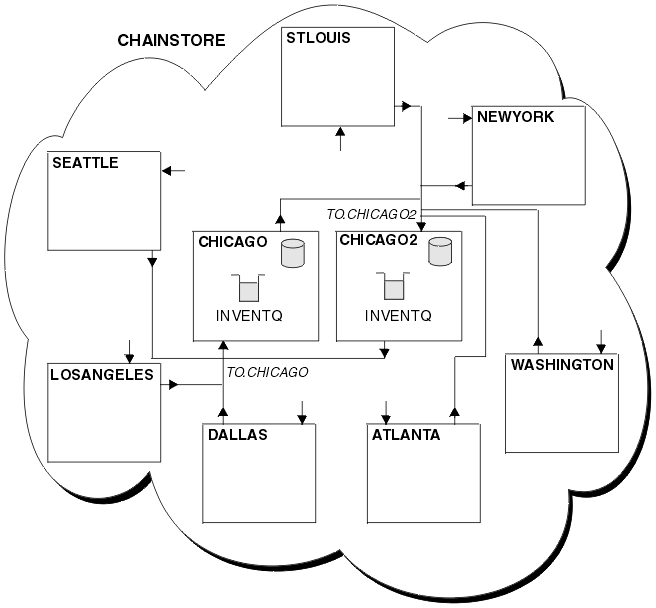9. Implement the cluster workload exit (optional step)
Because there is more than one destination for messages sent to the INVENTQ, the workload management algorithm will determine which destination each message will be sent to.
If you want to implement your own workload management routine, write a cluster workload exit program. See Workload balancing for more information.
Now that you have completed all the definitions, if you have not already done so, start the channel initiator on WebSphere MQ for z/OS and, on all platforms, start a listener program on each queue manager. The listener program listens for incoming network requests and starts the cluster-receiver channel when it is needed. See Establishing communication in a cluster for more information.
The cluster set up by this task looks like this:
Figure 1. A cluster with a hub and spokes
Remember that this diagram shows only the channels that you have to define manually. Cluster-sender channels are defined automatically when needed so that ultimately all queue managers can receive cluster information from the two full repository queue managers and also messages from the two applications.
Once again, this is a very small example, little more than a proof of concept. In your enterprise it is unlikely that you will have a cluster of this size with only one queue.
We can easily add more queues to the cluster environment by adding the CLUSTER parameter to your queue definitions, and then removing all corresponding remote-queue definitions from the other queue managers.
Parent topic:
Procedure
qc11840_
Home
